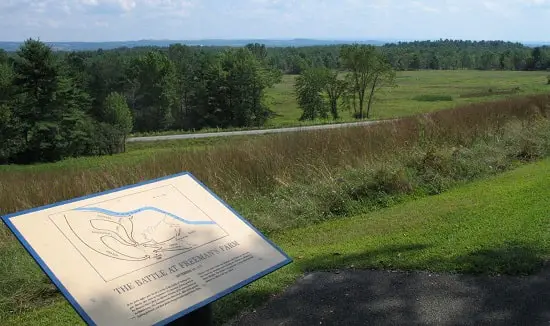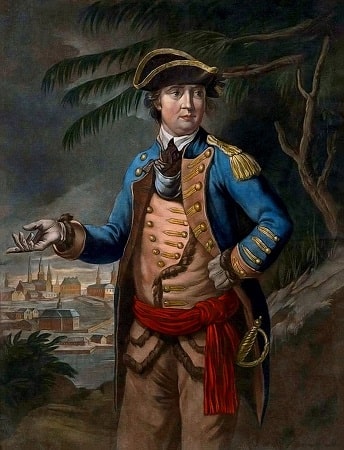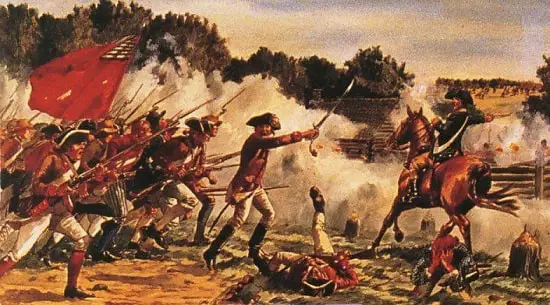The American Revolution that took place between 1775 and 1783 went through a massive turning point on October 1777 during the Battle of Saratoga.
Both the battles of September and October 1777 resulted in Patriot’s victory and marked the beginning of a massive turning point in the history of the American Revolution.
With the surrender of British General John Burgoyne in October 1777, the French supported Americans with needed military aid.
What were some of the important occurrences of the American Revolution?
Content
The British sought a two-pronged military strategy after the commencement of the American Revolutionary War.
Seize the Hudson River to isolate New England from the rest of the states and occupy the south by forcing the rebels out of the Carolinas and Virginia.
What happened post-American Revolution?
Following the Revolutionary War, there was a period of instability and transition.
The collapse of monarchical control, changing administrative institutions, religious fragmentation, family system problems, economic upheaval, and enormous population shifts increased insecurity and uncertainty.
What impact did the Revolutionary War have on the definition of liberty?
It posed a challenge to the colonial social order’s fundamental inequity.
The Battle of Saratoga

The Revolutionary War or the Battle of Saratoga took place between 19th September and 7th October 1777 giving Americans a decisive win over the British.
According to the Saratoga Campaign planned by the British officials, the British Army, under General John Burgoyne, was to conquer Albany, New York, and Southern Colonies from Canada in the Champlain Valley.
Where the army was to meet other British forces, under General Willian Howe, coming northward from New York City, and forces under General John Graces Simcoe eastward from Lake Ontario.
However, the forces coming from Southern and Western directions did not show, and General Burgoyne was trapped by the American 24 kilometers before the meeting point.
General Burgoyne, despite being surrounded by the Americans, fought two battles – 14 Kilometers South of Saratoga and managed to win the first battle but could not beat the greater force of the Americans in the second battle.
The British force along with General Burgoyne surrendered, marking the second battle of Saratoga, the turning point of the American Revolution.
Although France had previously provided supplies, ammunition, and artillery, including the de Valliere cannon, which played a significant part in Saratoga, Burgoyne’s surrender played a massive role in bringing France into the war as an American ally.
Battle of Freeman’s Farm: First Saratoga

Burgoyne sent out his army to Bemis Height to sideline the American Army on September 19. Major General Benedict Arnold, his field commander, had already positioned a significant army in his way as he had foreseen this step.
He had deployed Colonel Daniel Morgan with five hundred of the best shooters. This group was named Morgan’s Riflemen.
Together, they took over Freeman’s Farm; however, the war still continued. He was waiting for backups from New York. Meanwhile, the American army was increasing in numbers by the day.
British General Sir Henry Clinton also joined the British army on October 6 and conquered Forts Clinton and Montgomery in the Hudson River highlands and Kingston on October 13. This was done in an attempt to divert the American attention away from Burgoyne, but it proved to be late for that.
Burgoyne attacked Bemis height once again as he did not see his army accompanying him anytime soon. However, his army was forced back to their initial positions.
On September 19, the Americans captured a part of the British lines.
Interval

Burgoyne’s force waited for a day before attacking on September 21 as they approached the American line and set their positions. This planned attack was called off on the order of Henry Clinton. So, he waited for Clinton to come and save his army after he wrote to Clinton on September 23.
Clinton set sail from New York on October 3, and after his arrival, on October 6, he conquered Forts Montgomery. He raided the mansion of the Patriot Livingston family in Clermont on October 16. It was the furthest north any of his troops had gone.
Meanwhile, in the American camp, the rivalry between Horatio Gates and Benedict Arnold
broke into a fight. Arnold was credited by all field leaders and men for their victory as Arnold had commanded most of the troops. He was in charge of the force while Gates sat in his tent.
Arnold objected, and the argument transformed into a yelling fight. This caused Gates to hand over Arnold’s command to Benjamin Lincoln.
Arnold then requested a transfer to Washington’s command, which he was granted. He still opted to sit in his tent instead of leaving.
In the British army, Clinton could no longer assist Burgoyne. Burgoyne called for a war council, and multiple possibilities were debated, but no final choices were made.
The next day, they held the council again. Riedesel suggested withdrawal which Burgoyne immediately refused as he thought it would be a shameful act.
On October 7, they eventually agreed to launch a two-thousand-man assault on the American left border.
Battle of Bemis Heights: Second Saratoga

Burgoyne has around five thousand men ready for war due to casualties from the previous war. They were supposed to retreat, but he insisted on inspecting the American left border to launch an attack.
They moved about one kilometer to Berber’s wheat field above Mill Brook and inspected the American position. The Americans informed Gates about the movement, and he sent Morgan’s riflemen to the far left, with Poor’s men on the left, New York Regiments on the right, and Learned’s men and Massachusetts Regiments, plus militia companies, in the middle.
The British army fired Poor’s gunmen fired back, leaving the British gunfire ineffective. Then the Americans started shooting at close range.
Despite being outmanned, Morgan was able to thwart multiple British attempts to move west. Soon after, the British started to retreat back.
General Arnold rode out to join the combat despite the feud in the American camp. Arnold moved toward the action after seeing that the advance had been checked. Learned was preparing to attack the Breymann redoubt.
The capture of Breymann’s redoubt exposed the British camp and finally captured it.
Surrender by the British

Burgoyne’s attempts to take the American position had failed, and his front line had been broken. He had lost one thousand soldiers in two fights, along with a number of his most capable commanders.
He then called for a council of war on October 13 to discuss his terms for surrender, which was his army being paroled and permitted to march back to Canada without their guns.
The two sides signed the capitulation after many days of negotiations. After returning to England, General Burgoyne was never awarded another command position in the British Army.
Burgoyne surrendered his forces to Gates on October 17. As they marched out to surrender, the British and German troops were offered the conventional honors of war.
The men created the Convention Army, called after the treaty that allowed them to return to Europe safely. However, the Continental Congress annulled the convention, and the Convention Army was held captive until the war’s end.
